Snakestone Fossils
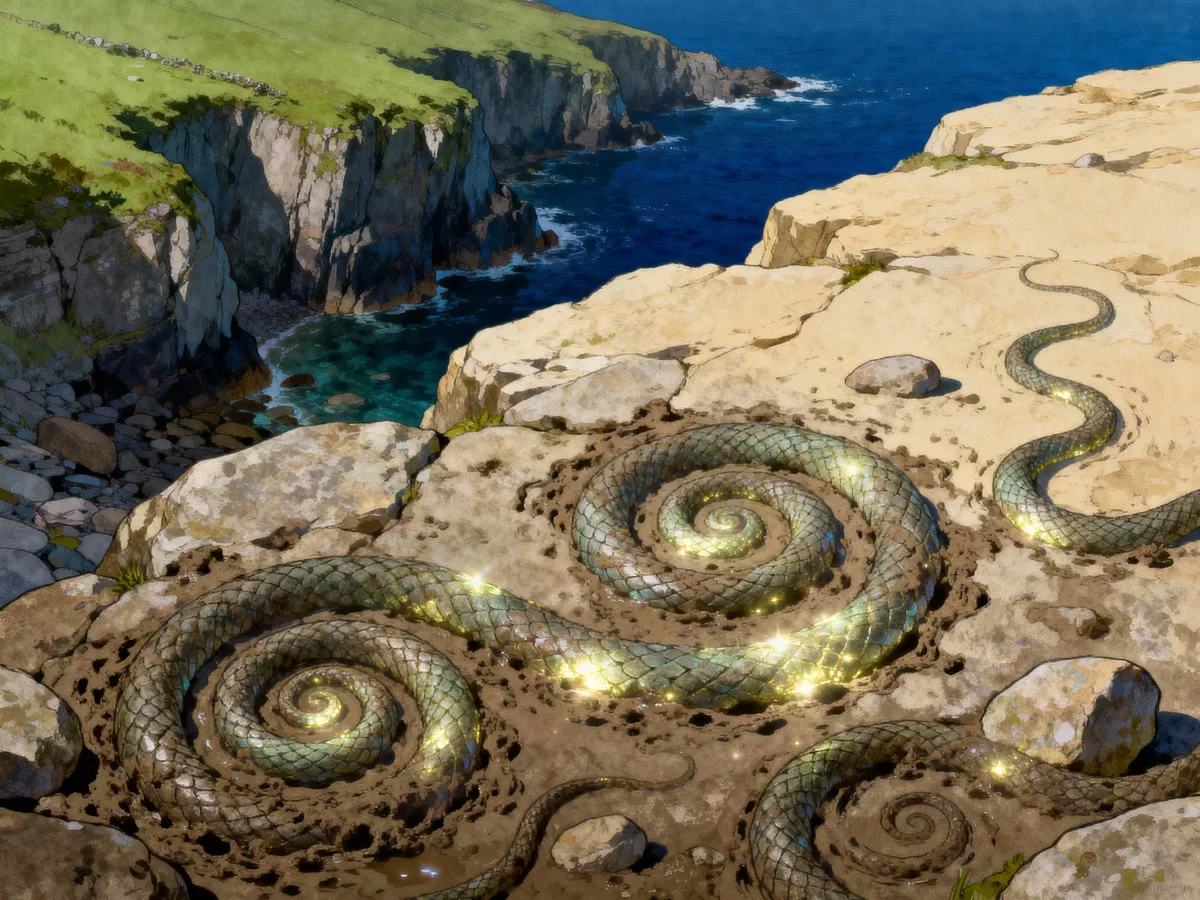
The Story: The Serpents in the Stone
Long before science gave them names like ammonites and goniatites, the people who quarried the dark, layered flagstone around Liscannor knew the strange shapes locked within it. They saw them with their own eyes: perfect spirals like coiled serpents, and winding, wavy tracks that looked for all the world like the path of a slithering snake, frozen in mid-motion. They were beautiful, mysterious, and unsettling. And to explain them, they told a story not of geology, but of a great miracle.
The tale begins in an ancient, pre-Christian Ireland, a land teeming with both magic and menace. In this telling, the island was plagued by serpents. They were a real and constant danger, but more than that, they were symbols of the old ways, the dark and tangled paganism of the Druids that held sway over the land.
Into this world stepped a champion of a new faith—most famously Saint Patrick, though some local versions of the story credit a powerful local saint or even a mighty druid from a bygone age. He came to cleanse the land, to bring the light of Christianity to a shadowed isle. To do this, he couldn't just convert the people; he had to defeat the old symbols. He had to banish the snakes.
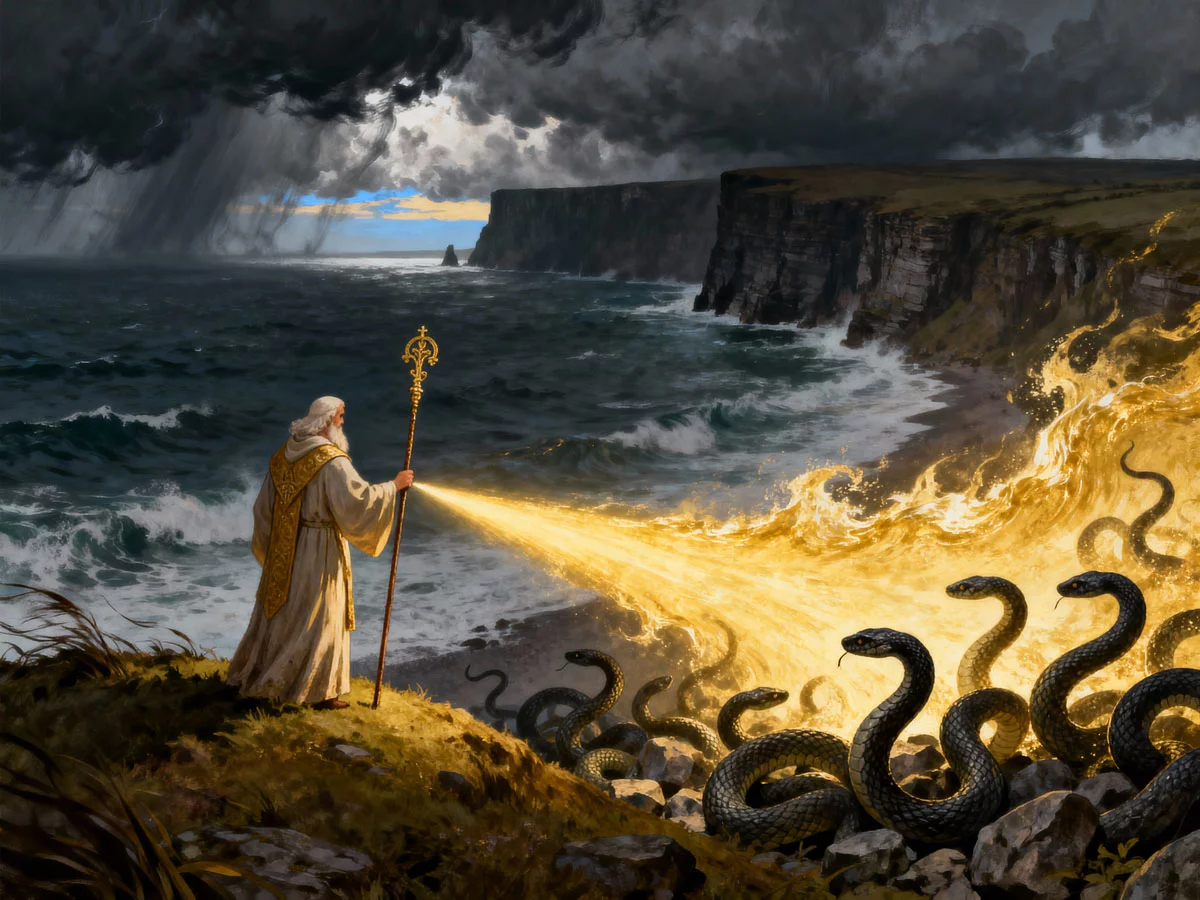
The confrontation was epic. Standing on a high hill overlooking the coast of Clare, with his sacred crozier in hand, Patrick delivered a sermon of such divine power that the very earth trembled. His voice boomed across the valleys, and a holy force swept the land. The serpents, unable to withstand his sacred command, were driven before him. From every corner of Ireland, they swarmed in a great, slithering mass, fleeing west towards the sea.
They converged on the coast near Liscannor, a final, writhing tide of paganism seeking to escape the saint's power. As they reached the water's edge, slithering over the damp, dark mudstone, Patrick performed his final miracle. He struck the ground with his staff, and a wave of divine energy surged through the rock. In an instant, every serpent was turned to stone.
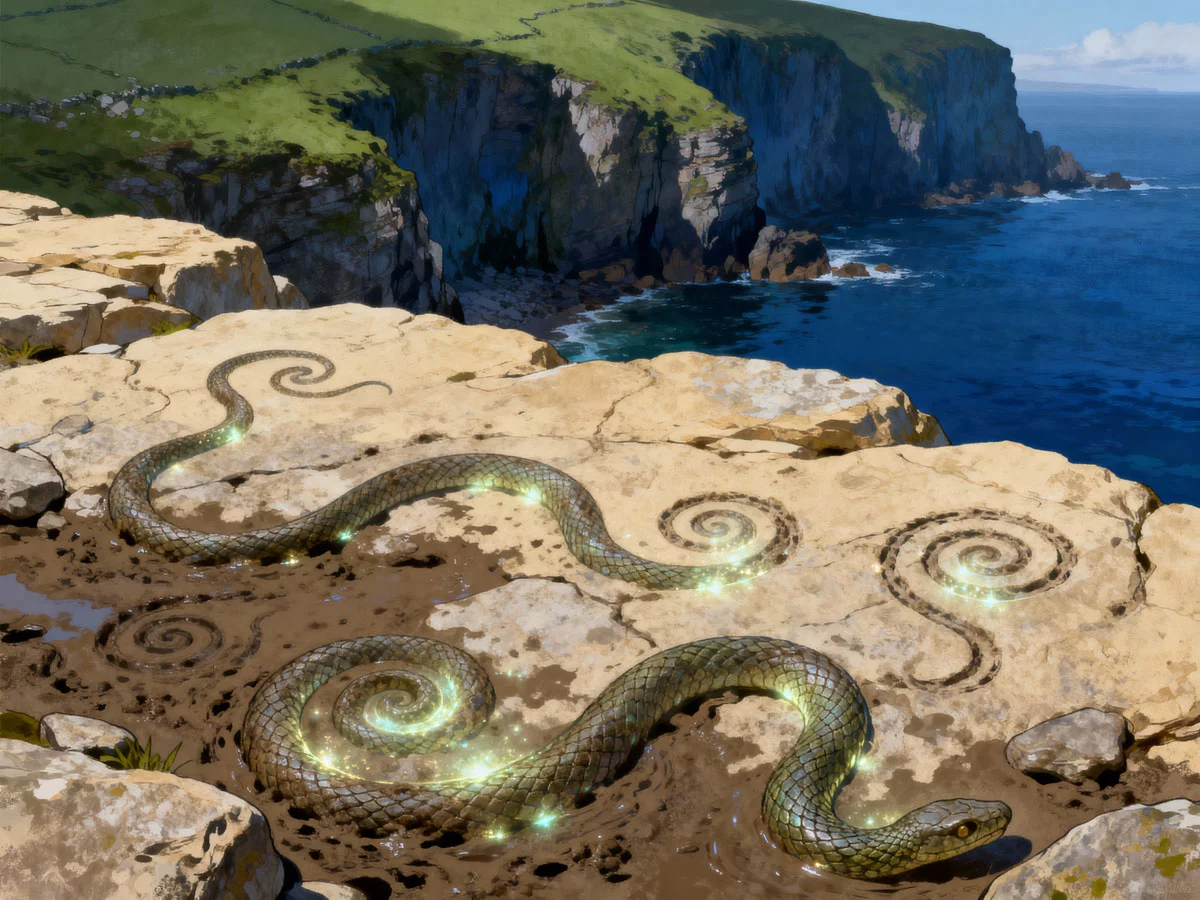
Their coiled bodies and slithering forms were captured forever, transformed from living flesh into fossilised rock. The land was cleansed, the old ways were defeated, and the proof of the miracle was permanently etched into the very stone of County Clare. From that day on, every time a quarryman splits a slab of Liscannor stone and finds a perfect "snakestone," he is not just finding a fossil; he is holding a testament to the saint's power, a serpent conquered by faith.
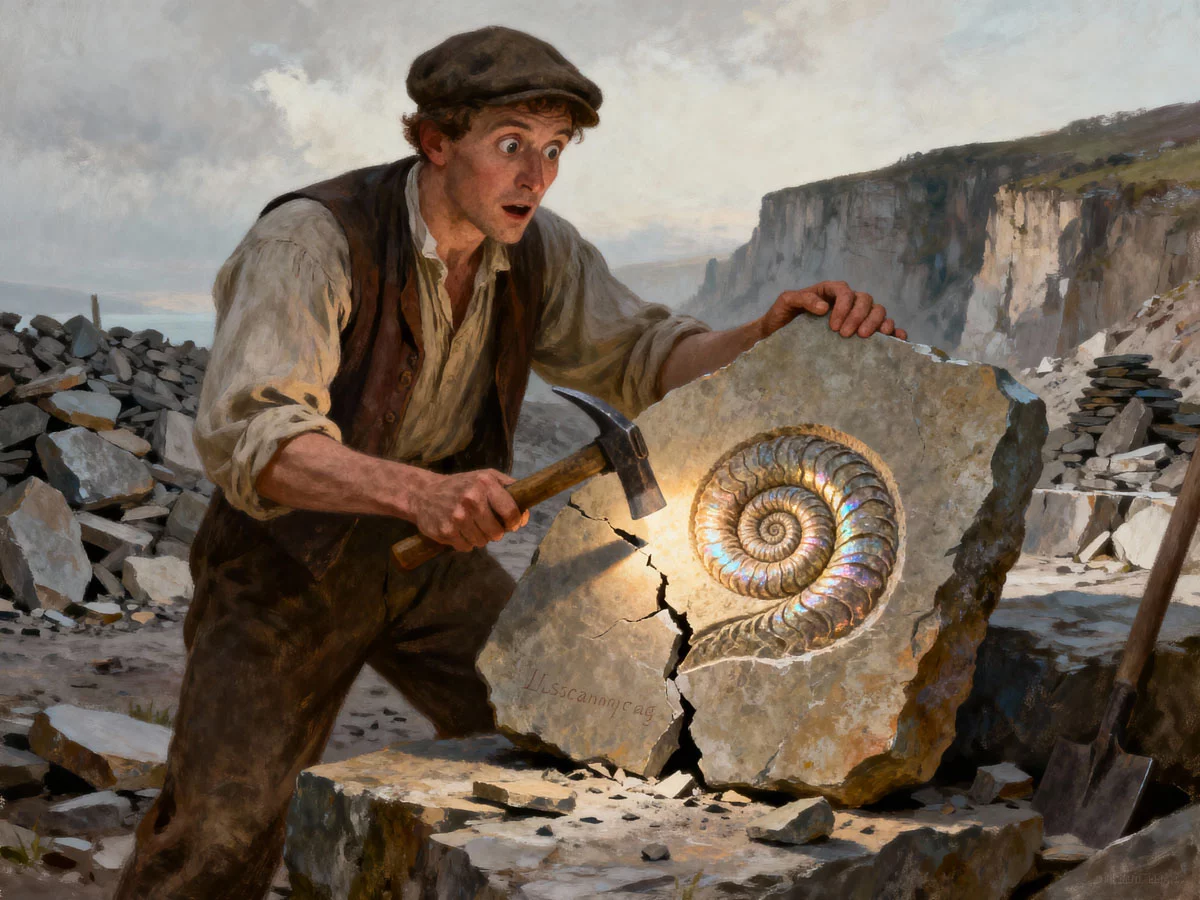
Analysis: A Miracle You Can Hold in Your Hand
This legend is a beautiful example of folklore providing a poetic explanation for a natural wonder. It's a story that operates on multiple, fascinating levels.
Etiological Myth (A "Poetic Science"): At its core, this is a classic etiological myth. It answers the question, "What are these strange shapes in the rock?" Before the development of palaeontology, the resemblance of ammonite fossils to coiled snakes was uncanny and demanded an explanation. The story of a saint's miracle is a far more satisfying and culturally significant answer than "it's a fossilised sea creature." It's a form of folk science, explaining the world through a narrative lens.
A National Myth Made Local: The legend of St. Patrick banishing the snakes is Ireland’s great national myth of Christianisation (even though Ireland never had native snakes, making the original story itself a metaphor). The Snakestone folklore is a brilliant piece of localization. It takes this grand, abstract national story and grounds it in a specific, tangible local product: Liscannor flagstone. It gives the people of Clare a direct piece of the action, making their home the stage for the story's climax.
Religious Allegory: The story is a powerful allegory for the triumph of Christianity over Paganism.
Snakes as Symbols: Serpents in many mythologies represent pagan, chthonic (underworld), or druidic power. By banishing them, St. Patrick isn't just performing pest control; he is metaphorically cleansing the land of its old religion.
Petrification as Victory: Turning the snakes to stone is a masterstroke of symbolism. The threat is not just eliminated, it is neutralised and transformed into a permanent monument to its own defeat. The very ground becomes a testament to the power of the new faith.
The Power of Tangible Folklore: Unlike a ghost story or a tale of a sunken city, the Snakestones are real. You can touch them, hold them, and see them in the pavement beneath your feet. This physical "proof" gives the legend a powerful sense of immediacy and truth. It embeds the folklore into the everyday built environment, making the myth an inescapable part of the local identity.
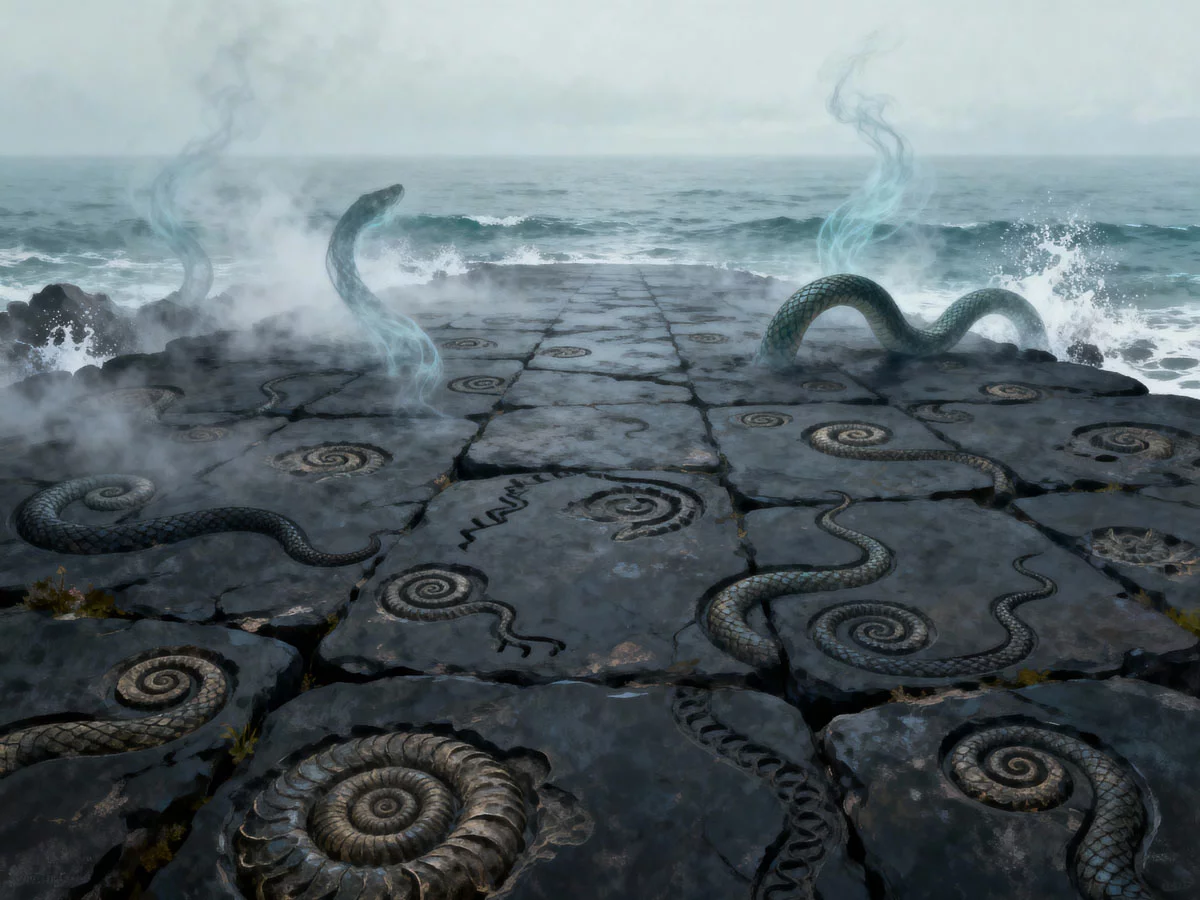
Related Heritage Sites
More Folklore
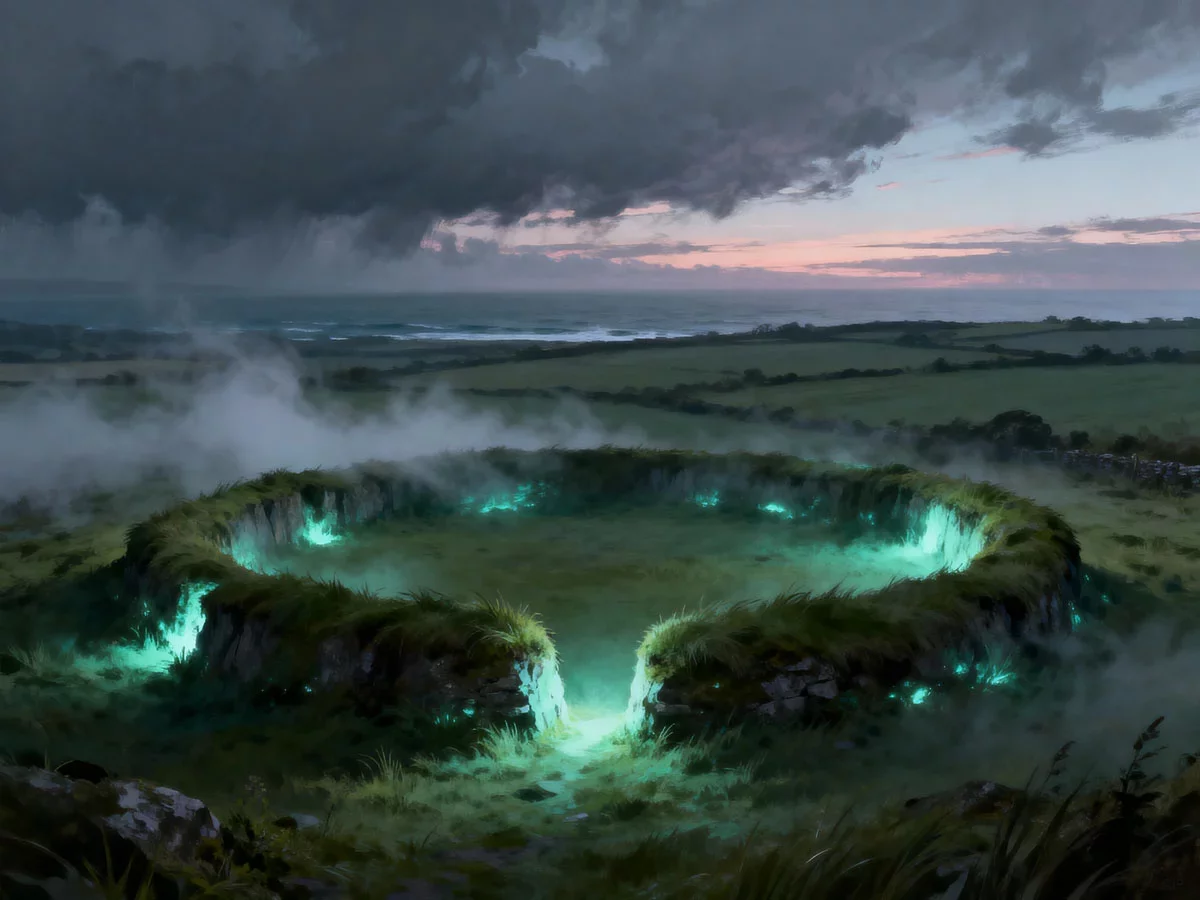
Local Fairies and Hill-Forts
Ancient ringforts (liosanna) are not ruins, but gateways to the Otherworld, the home of the Aos Sí (the fairies). A powerful folk tradition dictates these sites must never be disturbed for fear of angering their powerful, supernatural residents.

The Leap of the Foals (Aill na Searrach)
A group of the Tuatha Dé Danann, the old gods of Ireland, transformed into horses to hide from Christianity in a sea cave. After centuries, seven foals born in the dark emerged, were blinded by the sun, and tragically galloped off the cliff to their deaths.